Younggwan Kim
Lightweight feature encoder for wake-up word detection based on self-supervised speech representation
Mar 14, 2023



Abstract:Self-supervised learning method that provides generalized speech representations has recently received increasing attention. Wav2vec 2.0 is the most famous example, showing remarkable performance in numerous downstream speech processing tasks. Despite its success, it is challenging to use it directly for wake-up word detection on mobile devices due to its expensive computational cost. In this work, we propose LiteFEW, a lightweight feature encoder for wake-up word detection that preserves the inherent ability of wav2vec 2.0 with a minimum scale. In the method, the knowledge of the pre-trained wav2vec 2.0 is compressed by introducing an auto-encoder-based dimensionality reduction technique and distilled to LiteFEW. Experimental results on the open-source "Hey Snips" dataset show that the proposed method applied to various model structures significantly improves the performance, achieving over 20% of relative improvements with only 64k parameters.
Spatial Pyramid Encoding with Convex Length Normalization for Text-Independent Speaker Verification
Jun 19, 2019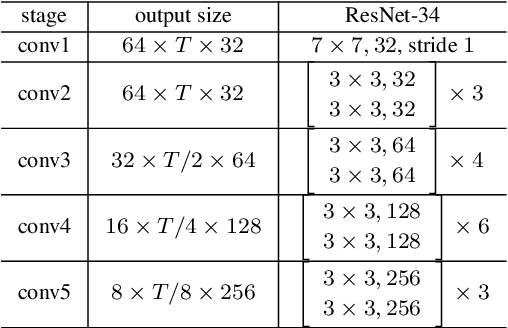


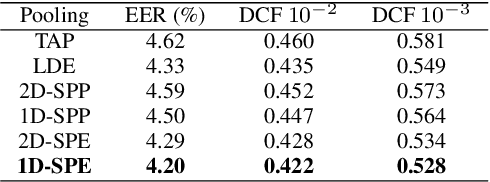
Abstract:In this paper, we propose a new pooling method called spatial pyramid encoding (SPE) to generate speaker embeddings for text-independent speaker verification. We first partition the output feature maps from a deep residual network (ResNet) into increasingly fine sub-regions and extract speaker embeddings from each sub-region through a learnable dictionary encoding layer. These embeddings are concatenated to obtain the final speaker representation. The SPE layer not only generates a fixed-dimensional speaker embedding for a variable-length speech segment, but also aggregates the information of feature distribution from multi-level temporal bins. Furthermore, we apply deep length normalization by augmenting the loss function with ring loss. By applying ring loss, the network gradually learns to normalize the speaker embeddings using model weights themselves while preserving convexity, leading to more robust speaker embeddings. Experiments on the VoxCeleb1 dataset show that the proposed system using the SPE layer and ring loss-based deep length normalization outperforms both i-vector and d-vector baselines.
Learning acoustic word embeddings with phonetically associated triplet network
Nov 28, 2018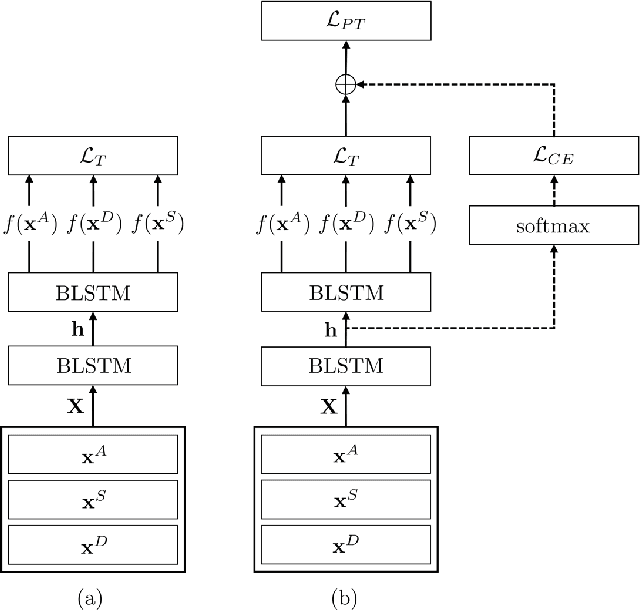

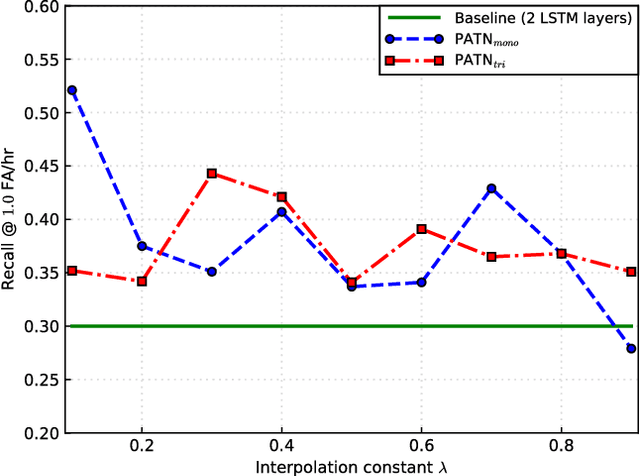
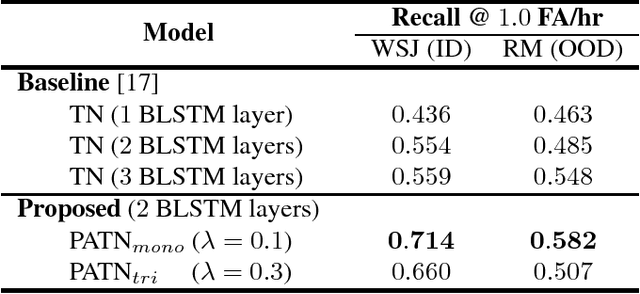
Abstract:Previous researches on acoustic word embeddings used in query-by-example spoken term detection have shown remarkable performance improvements when using a triplet network. However, the triplet network is trained using only a limited information about acoustic similarity between words. In this paper, we propose a novel architecture, phonetically associated triplet network (PATN), which aims at increasing discriminative power of acoustic word embeddings by utilizing phonetic information as well as word identity. The proposed model is learned to minimize a combined loss function that was made by introducing a cross entropy loss to the lower layer of LSTM-based triplet network. We observed that the proposed method performs significantly better than the baseline triplet network on a word discrimination task with the WSJ dataset resulting in over 20% relative improvement in recall rate at 1.0 false alarm per hour. Finally, we examined the generalization ability by conducting the out-of-domain test on the RM dataset.
 Add to Chrome
Add to Chrome Add to Firefox
Add to Firefox Add to Edge
Add to Edge